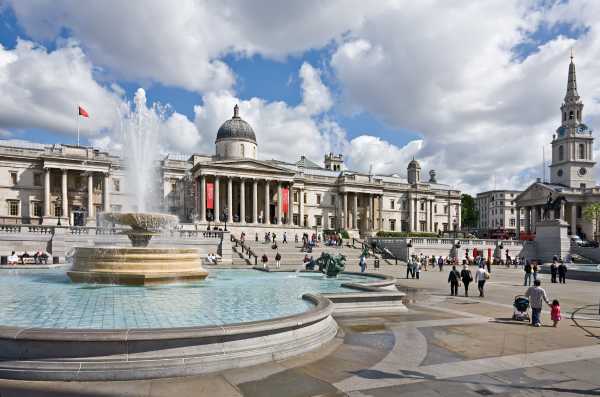| Trafalgar
Square a public meeting
place in the heart of London since the Middle
Ages

Once the site of the King's
Royal Hawks, and then the Royal Mews, the area
now known as Trafalgar Square became known as
Charing Cross after a memorial cross was placed
on the square by King Edward I in 1291-94; the
"Charing" part of the name is from an
Old English word for a nearby bend in the River
Thames.
In 1812, the Prince Regent
(later King George IV) hired architect John Nash
to develop a new street from Charing Cross to
Portland Place, and to form an open square in
what was then the Great Mews stabling of
Whitehall Palace. The death of Nash delayed the
project, however, and work did not begin until
1830. It was at this time that the area was
renamed Trafalgar Square, in honor of Admiral
Lord Horatio Nelson's
victory over the French fleet at the Battle of
Trafalgar on October 21, 1805. Work on the
National Gallery began in 1832, and ended with
its completion in 1838.
After completion of the
National Gallery, Sir Charles Barry, architect of
the Houses of Parliament, presented a plan to
further develop the square by adding an upper
terrace next to the Gallery and a lower level
square linked to the terrace by a staircase. That
work began in 1840 and was finished five years
later. Nelson's Column was installed in 1843, and
the two massive bronze lions were added to its
base in 1868.

Greater London Authority https://www.london.gov.uk/priorities/arts-culture/trafalgar-square

Horatio
Nelson
Questions or comments about
this page?
|



